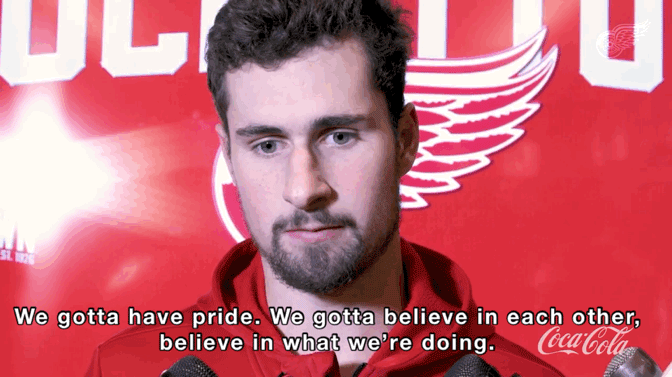#GiveLarksTheC: Why Dylan Larkin Will Be Our Next Captain
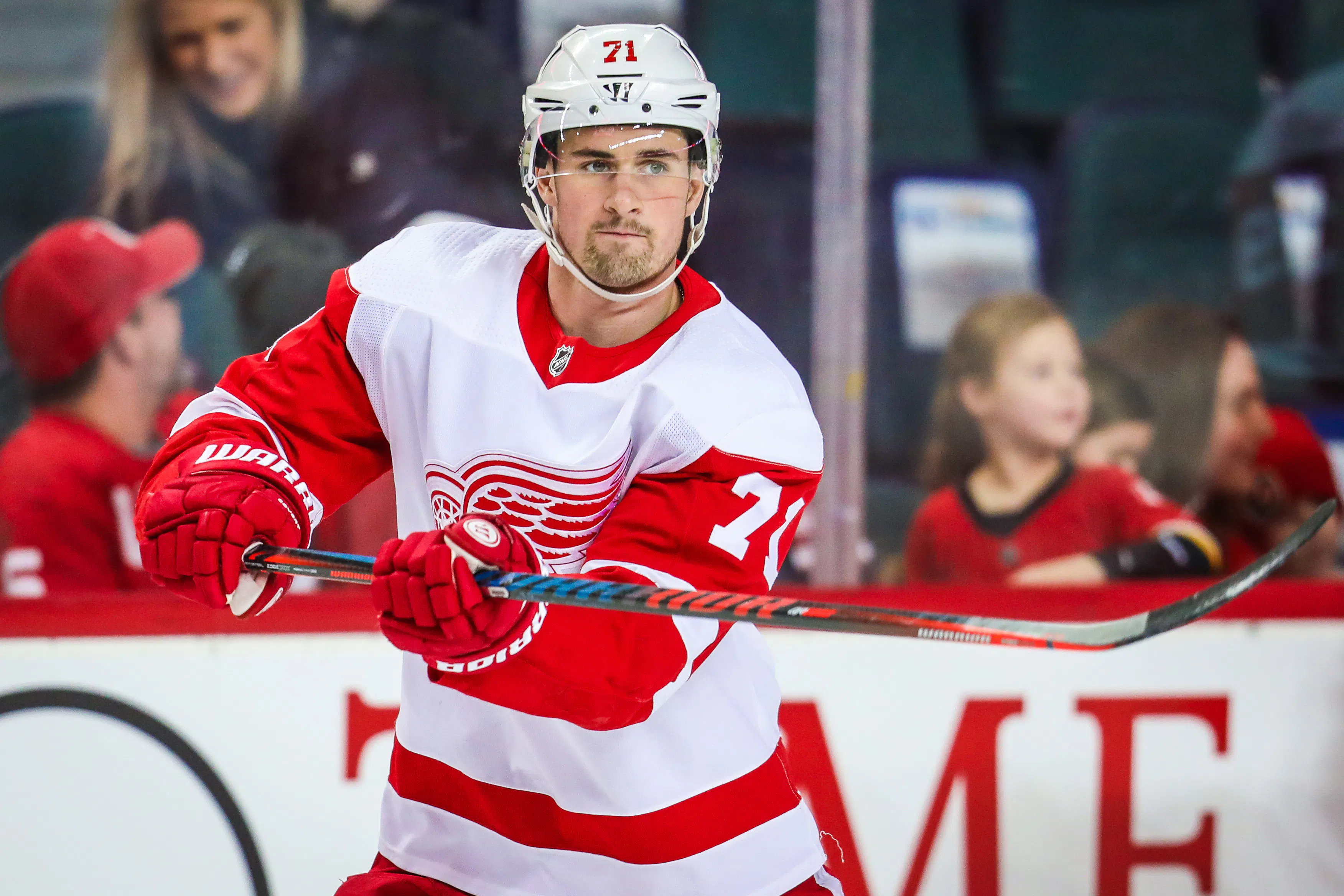
As we slug through the NHL off season, it seems pretty obvious that when we see the boys again in October, Dylan Larkin’s jersey will look a little different. That A will have gone the way of the dodo, MySpace, and Tyler Bertuzzi’s left front tooth. And in its place? A shiny new C.

If there was any doubt at the beginning of the season that Larkin would be our next captain, it’s all but extinguished now. For months Red Wings reporters have been bold enough to call it a guarantee, and it’s easy to see why. Being named an alternate captain gave Larkin a chance to develop his leadership skills and show the team and the fans how well he could wear a letter. He took a huge step forward during what turned out to be an impressive breakout season.
On the Ice
In the 2018–19 season, Larkin led the team in goals (32), assists (41), points (73), and shots (287). He also led all forwards and even most defensemen in average ice time (21:51). He was a regular on special units, tallying 7 power-play goals and 2 short-handed goals. He was the king of clutch during extra time, racking up 4 overtime winners for the season and breaking a franchise record in the process. He wowed us all with a 14-game point streak in December. And as the icing on the cake, he became the first Red Wing in a decade to break 30 goals. As our own Nick Seguin wrote, “It had to be Dylan Larkin.”1
When you compare Larkin’s stats for the previous season with the most recent one, it’s clear that he stepped up in Henrik Zetterberg’s absence. He doubled his goal count from the 2017–18 season while falling by only a handful of assists, finishing at nearly a point-per-game pace. He demonstrated his considerable offensive capability while maintaining good defensive responsibility as well. The jury’s still out on exactly what level Larkin can reach in his play, but he’s proving himself to be a genuinely good, if not great, 200-foot player.
What’s even more remarkable to me than Larkin’s performance is his attitude. He has an inner drive that you’d be hard-pressed to find a match for, even in the NHL. He is highly competitive and extremely motivated. He’s a workhorse—one of the first on the ice and one of the last off the ice every day. He has all the grit the Detroit media is constantly propagandizing along with the skill to make it actually mean something. He gives 100% during every shift, every practice. His work ethic may be the most elite component of his game.
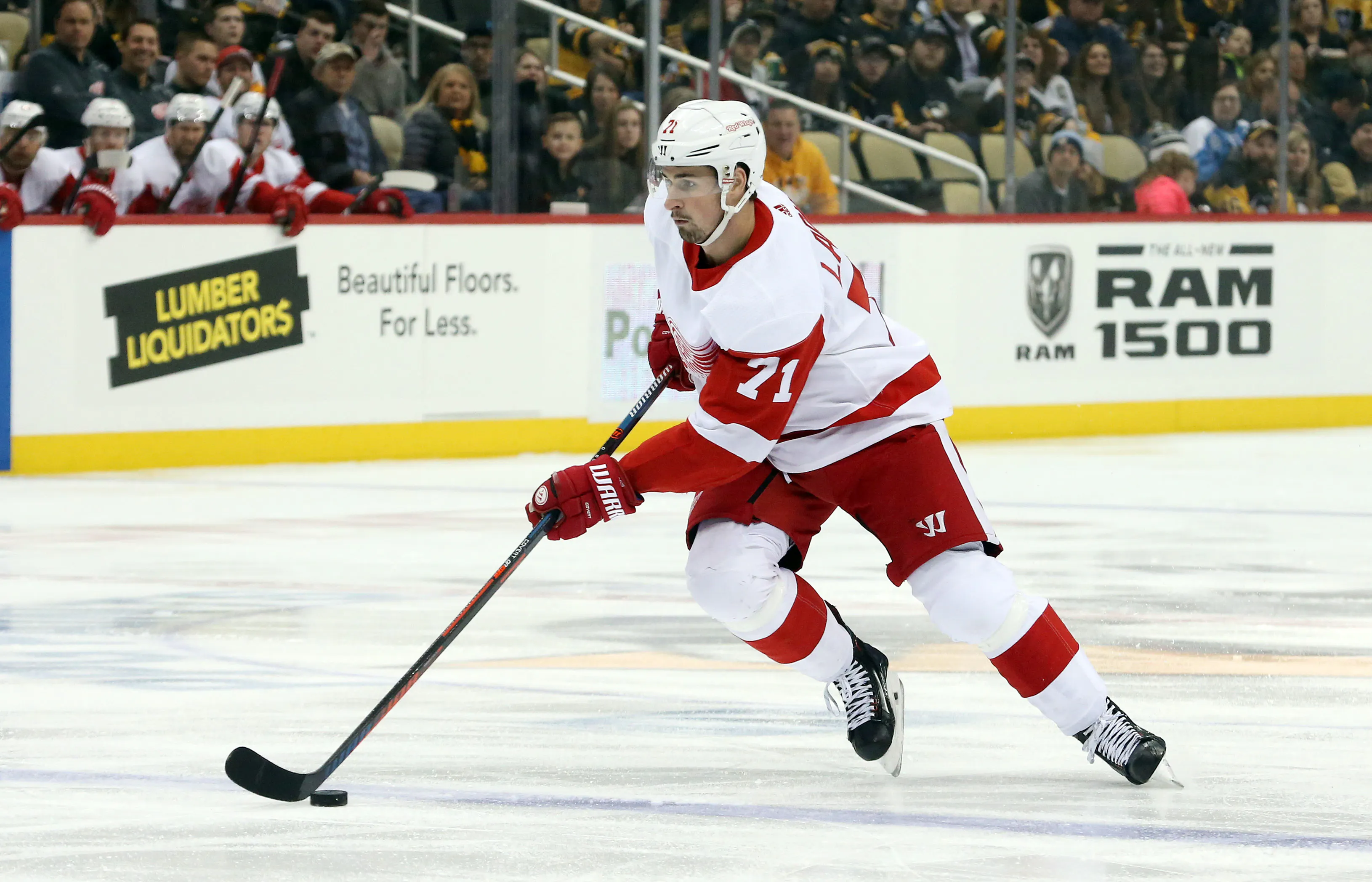
Larkin skates with the puck during a matchup with the Pittsburgh Penguins on Dec. 27, 2018.
That never-give-up mindset is exactly what makes Larkin such a special player—the kind that former general manager Ken Holland described as a “bus driver.”2 He pushes hard every day to get better. And why? It’s not because he wants recognition for himself. In fact, he’s had a tendency to brush off praise during interviews, sometimes even seeming a little exasperated with it. “I’m sorry, I don’t really wanna talk about this right now,” he said after a 3-1 loss to Buffalo in February. “I gotta be better for our team. We gotta find a way to step up.”3
To Larkin, it didn’t matter that he was having the best season of his career so far because if the team was still bad, he had more work to do. He strives for individual excellence not to gain personal acclaim but to elevate the team as a whole. He’s the very definition of a team player.
Off the Ice
Larkin is the unquestionable leader on the ice, but what about off the ice? His teammates attest that his impact is just as strong in the locker room. “I think he’s the number one leader right now in the room,” forward Anthony Mantha said. “He’s stepped up a lot and hopefully guys can follow him.”4
Larkin’s leadership is innate. He leads naturally by example, inspiring his teammates with his infectious determination. The influence he has on younger players is especially telling in the midst of a rebuild. When Mortiz Seider was drafted in June, Larkin was the first to call and welcome him to the team.5 And at the beginning of the season, he invited rookie Michael Rasmussen to be his roommate. “He’s a great guy to me,” Rasmussen said. “He’s always supporting me, giving me a pat on the back. . . . He’s a big role model to me.”6
Larkin is a role model not just to his teammates but to the fans. As a board member of the Ted Lindsay Foundation, he raises awareness for autism. Each summer, he holds the Larkin Hockey School to coach youth in the area. He never misses an opportunity to toss a puck #ForTheKids or make a fan’s day with a photo or autograph. He really seems to understand and embrace what it means to be the face of a storied franchise and community fixture like the Red Wings.
“It’s so much more than on the ice,” he said. “You also have to set the example for the community, doing things away from the rink, being a leader, being a person kids can look up to. All that is something that the greatest Red Wings that have been captains have done.”7
Growing into a Captain’s Role
Larkin definitely seems to be “captain material,” but is he truly prepared to take on that role? When Zetterberg first retired, many fans had misgivings about making Larkin captain right away. At 22 years old, he was probably not ready for the kind of responsibility that comes with being a captain in the NHL. Would he be able to elevate his game in Zetterberg’s absence? Was he mature enough to be a leader both on and off the ice? Would he be able to handle the pressure of leading a team through a tank season and addressing the media after all the losses?
In my eyes, the clear answer to all of these questions is yes. Some fans feel that he still needs more time to mature emotionally, and I’ll admit that he needs to learn to reign in his temper a bit. But at the same time, I found it refreshing to see him express the same frustration that all the fans were feeling. The passion I saw showed me that Larkin cares, more than anyone else.
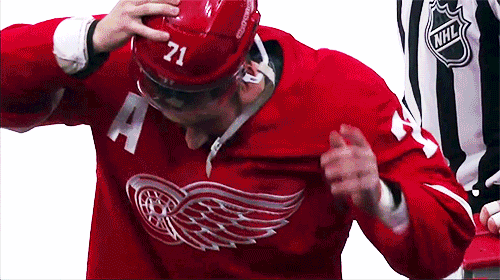
Larkin reacts after an 8-1 loss to Montréal on Feb. 26, 2019.
It would’ve been so easy for him to just give up, to become detached and shrug off the losses like so many other players on failing teams. He didn’t have to care so much or try so hard. But accepting failure is not in his nature. Even during a tank, he demands better—of himself and of his team. This season, Dylan Larkin showed his teammates how to care even when you’re not supposed to. And to me, that’s a valuable kind of leadership in its own way.
Dylan Larkin’s Team
For most Wings fans, there’s no question that Larkin has earned the captaincy. When management decided to go a season without a captain, they presented a natural opportunity for another player to step up and fill the vacuum Zetterberg left behind, and Larkin was the one who stepped up, in every way. If management was waiting for him to be done “cooking” before they gave him the C . . . ding, ding. He’s ready. As far as I’m concerned, Dylan Larkin is the captain of this team, whether it’s official or not.
With Henrik Zetterberg gone and Niklas Kronwall soon to follow, it’s becoming obvious that the Red Wings of today are not the same team they were before. There’s been a discernible shift in team culture, and the new team that’s emerging is not Zetterberg’s (or Justin Abdelkader’s, for that matter). It’s Larkin’s.
“I sense that this team has a completely different attitude,” Wings analyst Chris Osgood said. “They have a togetherness that they didn’t have the last couple years. . . . Henrik Zetterberg just retired. . . . This is becoming Dylan Larkin’s team.”8
When Zetterberg hung up his skates for the last time, he marked the end of an era. We are witnessing a ceremonial transition from the old guard to the new. The next player to wear the captain’s C will be the leader of a new age in Detroit. And I’m convinced that leader should (and will) be Dylan Larkin, not just because he’s the best option of what’s available, but because he is the exact leader the Red Wings need right now—someone who’s young and passionate, with enough fire in him to blaze a trail into a new chapter of Red Wings history.
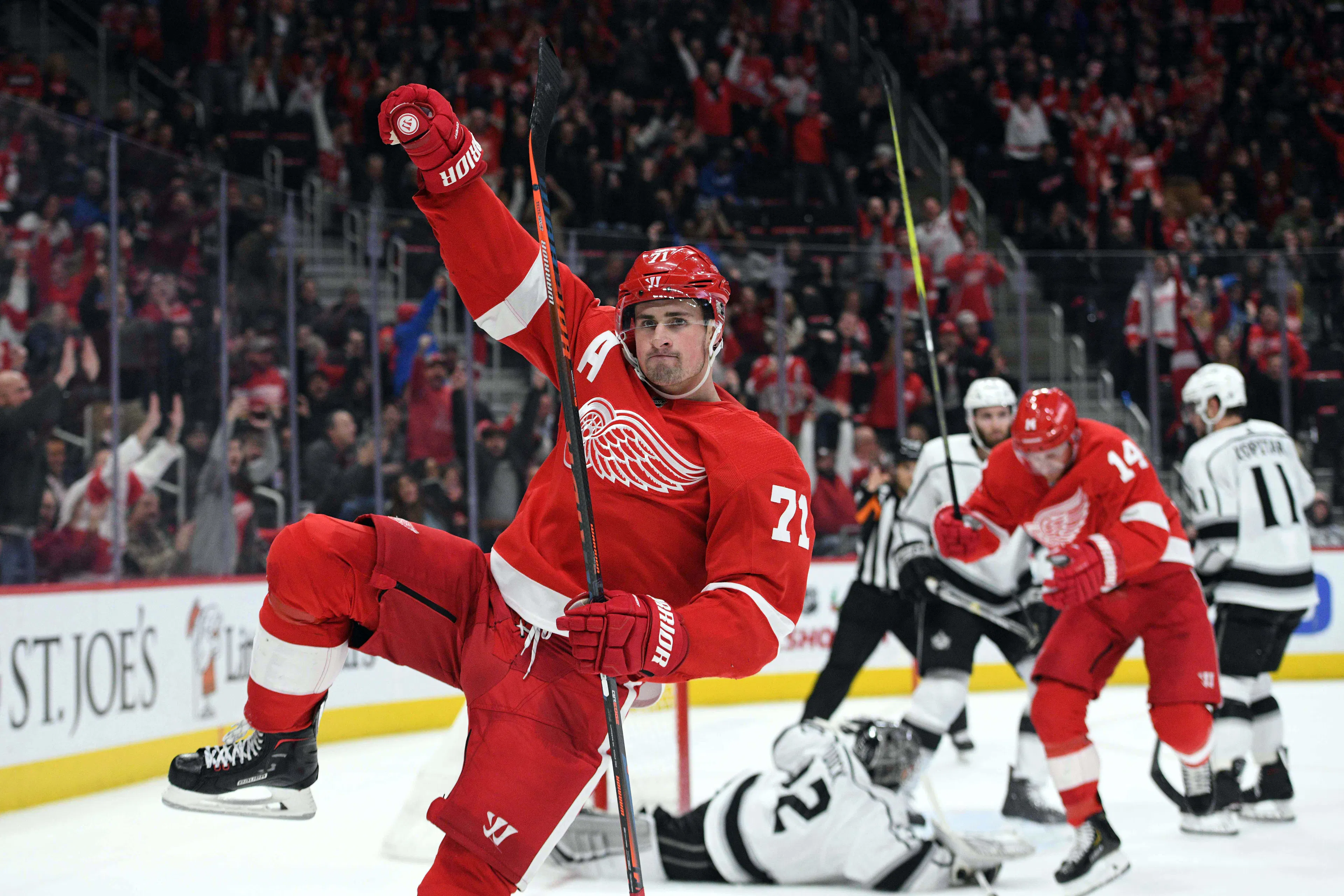
Larkin celebrates a goal in a 3-1 victory over the LA Kings on Dec. 10, 2018.
By the way, for those who keep bringing it up: no, Larkin is not Steve Yzerman, and he never will be. And frankly, I’m getting tired of the comparison. It’s time to stop forcing Larkin into the shadows of our past greats and instead bring him in the spotlight to become whatever it is he’s going to become. He’s not the next Steve Yzerman, but he is the first Dylan Larkin, which I think is pretty special in and of itself.
The 2018–19 season was my first time following the Red Wings, and it was Larkin that made me fall in love with hockey. Even before I could properly follow the puck, I was drawn to his enthusiasm for the game, his love of the team, his pride in wearing the winged wheel. I didn’t choose for him to be my favorite player; it just kind of happened that way. As a Wings fan, I’ll always love and appreciate the captains who came before, and I’m sad I missed seeing how they led the team. But I am here for Larkin now, and one of the most exciting things for me in my first hockey season was watching him grow into a leader before my eyes.
There’s something so poetic about a Michigan kid becoming the captain of the team he grew up watching, following in the footsteps of the men whose posters he had on his bedroom walls. Dylan Larkin is continuing the Red Wings’ legacy, writing his own story with every stroke he cuts in the ice. And I am thrilled to be part of that story, no matter where it leads. Maybe one day in the future I’ll get to see him proudly lift the Stanley Cup, and I’ll say, “That’s my captain.”
Notes
- Nick Seguin, “With His 30 Goals, Larkin Continues to Lead Red Wings Rebuild,” Mar. 30, 2019.
- As reported by Kevin Allen, “NHL’s high-profile teams bottoming out: How soon before they are competitive again?” USA Today, Jan. 17, 2019.
- See Helene St. James, “Dylan Larkin remains Detroit Red Wings’ brightest star in dark season,’” Detroit Free Press, Feb. 9, 2019.
- See Helene St. James, “Detroit Red Wings’ Dylan Larkin is ‘going to be a superstar,’” Detroit Free Press, Jan. 19, 2019.
- See Ted Kulfan, “Red Wings unveil regular-season schedule; Moritz Seider ‘excited’ to be in Detroit,’” The Detroit News, Jun. 25, 2019.
- See Helene St. James, “Why Detroit Red Wings’ Dylan Larkin is such a ‘special player,’” Detroit Free Press, Oct. 30, 2018.
- The Red and White Authority podcast, episode 115, 5:17.
- Post-game comment, Apr. 4, 2019.
Recent articles from Maryssa Dennis

